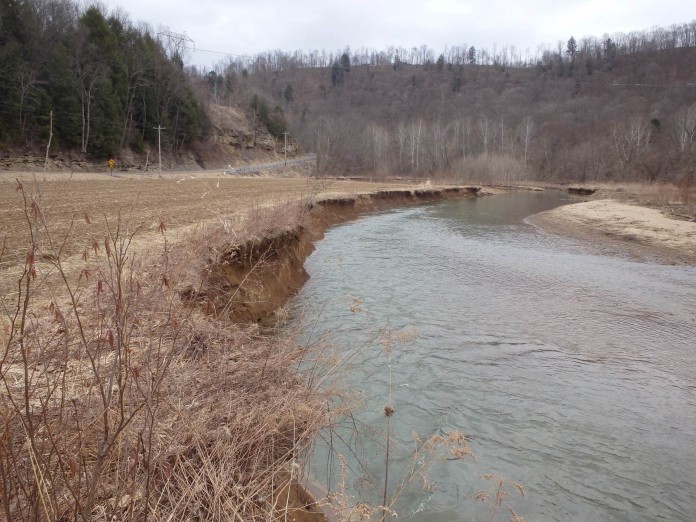
It was Ben Franklin in 1735 who first penned the phrase “an ounce of prevention is worth a pound of cure.” This common sense axiom is obviously relevant to a wide range of pursuits. Today we will apply it to issues related to stream bank erosion.
Happens quickly
It is not at all uncommon for folks to call the office asking for help in addressing rapidly eroding streambanks. In many instances, the problem is quite advanced with extensive areas of collapsing streambank that result in the rapid and significant loss of land area, or worse, threaten to compromise a house or other structure.
Unfortunately, the remediation of these issues is often complicated and therefore, expensive. Most sites will require a qualified engineering firm with advanced knowledge of hydrology and soils to design a fix that will actually work.
Also, because of the risk of negatively affecting neighboring or downstream landowners or the environment in general, there are detailed regulatory requirements under the jurisdiction of the U.S. Army Corps of Engineers. Sound expensive yet? It should. One professional with a large, well-known Ohio consulting firm recently told me that he has personally met with a hundred or more landowners about this issue and has never had a single one take the action required to fix the problem. The solutions are simply too cost prohibitive for the typical landowner.
No quick fix
So where does that leave us? Unfortunately there are no easy answers for folks already affected by a severe streambank erosion issue.
Potential “big picture” solutions are probably beyond the scope of this column, but hopefully as folks continue to raise concerns about these issues some sort of assistance is made available to landowners threatened by the most problematic areas. For the rest of us, let us refer back to the wisdom of Mr. Franklin.
The very best way to slow or prevent a stream bank from collapsing is to simply allow native hardwood trees and shrubs to remain or become re-established on the banks of the stream. Try to avoid mowing or planting crops on the edge of the stream bank. In residential settings, try creatively using rocks and hardwoods to landscape an aesthetic stream bank that will resist erosion.
Agricultural settings will benefit from a buffer area along the stream. In these instances, consider enrolling buffer acreage in the Conservation Reserve Program to protect the land while realizing the financial benefits that CRP offers. Although it is true that creeks will always meander as they have for an eternity, the rate at which this happens has a lot to do with the vegetation growing along the stream and the differences can be exceptional.
One source that I recently read claimed that a Midwestern stream might move an inch a year through native hardwood vegetation. That same stream denuded of all hardwoods was capable of migrating laterally at rates exceeding several feet per storm event. Once this type of rapid erosion and movement are realized, the fixes are no longer easy.
If you have a streambank erosion issue that you would like to address, consider contacting your local SWCD for advice on the best way to proceed.
Just be ready for some bad news.












